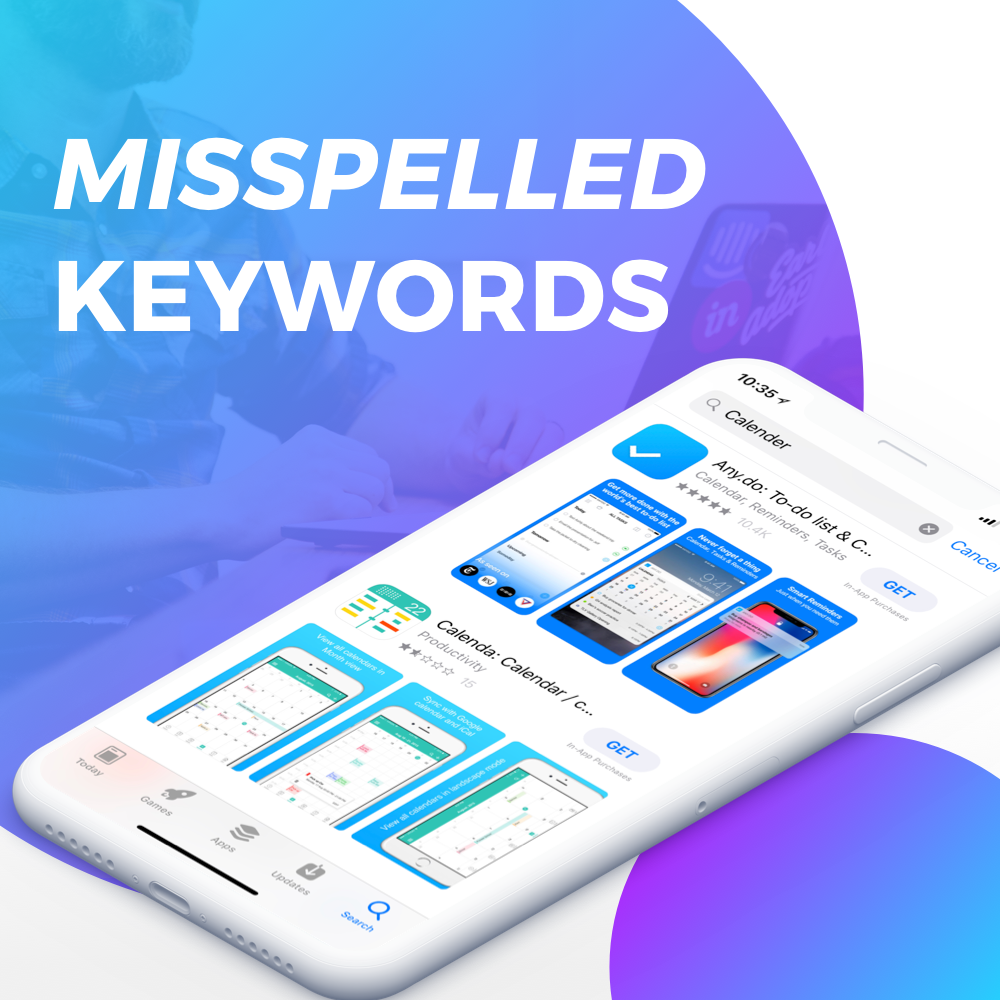Have you ever typed in a word wrong without knowing? I mean, spelling can be difficult for everyone sometimes, right?! 😅 In today’s article let’s discuss how to use misspelled keywords to increase search visibility.
What are misspelled keywords?
Remember in grade school when they tried to teach you those spelling tricks like: ‘i before e except after c’ or ‘dessert has 2 s’s because you want seconds and desert has one because you don’t want to get stuck there again’?
Well it turns out, a lot of people didn’t get great grades in English class!
But poor spelling aside, with so many languages being spoken in the US and other app store regions, it’s no wonder there are so many misspelled words entered into the app store’s search.
Why do misspellings matter? [case study]
Here’s a quick case example.
A client of ours had a solitaire game.
Just like all of our clients, they wanted to increase their installs. To do so, we have to increase the app’s search visibility, or the frequency and availability it is seen in search query results.
Now, solitaire is a very competitive space as there are many similar app games on the store. To win big in a competitive space, we took a look at misspellings as solitaire is a commonly mistyped word.
We found that “Solitaire” spelled correctly had a search volume of 73.
“Solitare” without the second ‘i’ was 52.
“Solataire” with an ‘a’ had a volume of 35.
A simple, yet strategic implementation of these keywords into the app’s product listing helped the client rank quickly and subsequently increase installs!
How to find misspelled keywords to capitalize on:
There are a few ways to find commonly searched misspellings.
You can use Apple’s Search Ads platform to search keywords and many times misspellings will pop up in the suggested keyword section.
Another useful leverage in Apple’s Search Ads platform is to see the average search volume for a keyword you input.
ASO PROTIP: utilize our Chrome Extension to view the actual numeric values for Apple Search Ad keyword volume! Get it for free here.
Another easy way to find misspellings to test is to visit SEO Book’s Keyword Typo Generator. This tool pulls from search engines and allows you to see the following categories:
Skip letters
Double letters
Reverse letters
Skip spaces
Missed keys
Inserted keys
For example, we could see that the top most common misspellings for “calendar” were “alendar, clendar, caendar, calndar, caledar, calenar, calendr”.
You can then determing the traffic and difficulty levels of these keywords from an ASO perspective and start building your misspelled keyword list.
The Calendar Example
Take for example the word “calendar”.
Typically this is a highly indexed misspelling that people input as “calender”.
Let’s say we had a new app that utilizes tracking for weight/food, period/ovulation, medicine/health etc. Those high volume keywords like “period tracker” or “weight tracker” will be hard to rank in the top 10.
Think instead about a secondary search term like “period calendar” or “weight loss calendar”.
These may be lower search volume but have less competition for those top spots. Apple and Google’s algorithms are intelligent enough to understand the terms that you meant to type, but sometimes having the exact match of these terms can prove beneficial.
Even more advantageous could be those that contain the misspelling for “calendar”!
Here is a prime example of where you could quickly win with search terms like “period calender” or “weight loss calender”.
Voilà! A winning misspelling!
Obviously, this process can be repeated for whatever keyword, category, or niche you are targeting. What do you think about using misspelled keywords for search visibility growth? Will you try this tactic? Let us know in the comments!






